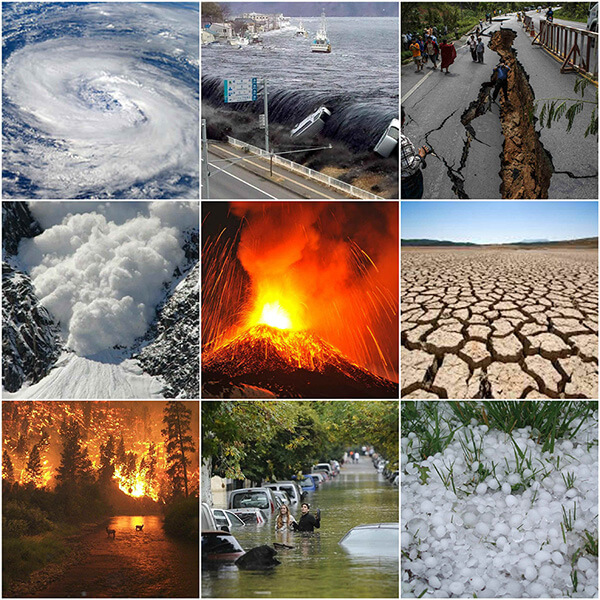
A natural disaster is a major adverse event resulting from natural processes of the Earth; examples include floods, hurricanes, tornadoes, volcanic eruptions, earthquakes, tsunamis, and other geologic processes. A natural disaster can cause loss of life or property damage, and typically leaves some economic damage in its wake, the severity of which depends on the affected population's resilience, or ability to recover and also on the infrastructure available.
An adverse event will not rise to the level of a disaster if it occurs in an area without vulnerable population. In a vulnerable area, however, such as Nepal during the 2015 earthquake, an earthquake can have disastrous consequences and leave lasting damage, which can require years to repair.
International law, for example Geneva Conventions defines International Red Cross and Red Crescent Movement the Convention on the Rights of Persons with Disabilities, requires that "States shall take, in accordance with their obligations under international law, including international humanitarian law and international human rights law, all necessary measures to ensure the protection and safety of persons with disabilities in situations of risk, including the occurrence of natural disaster." And further United Nations Office for the Coordination of Humanitarian Affairs is formed by General Assembly Resolution 44/182. People displaced due to natural disasters are currently protected under international law (Guiding Principles of International Displacement, Campala Convention of 2009).
Natural disasters can also affect political relations with countries and vice versa. Violent conflicts within states can exacerbate the impact of natural disasters by weakening the ability of states, communities and individuals to provide disaster relief. Natural disasters can also worsen ongoing conflicts within states by weakening the capacity of states to fight rebels. In developed countries like the US, studies find that incumbents lose votes when the electorate perceives them as responsible for a poor disaster response.
Between 1995 and 2015, according to the UN’s disaster-monitoring system, the greatest number of natural disasters occurred in America, China and India.
In 2012, there were 905 natural disasters worldwide, 93% of which were weather-related disasters. Overall costs were US$170 billion and insured losses $70 billion. 2012 was a moderate year. 45% were meteorological (storms), 36% were hydrological (floods), 12% were climatological (heat waves, cold waves, droughts, wildfires) and 7% were geophysical events (earthquakes and volcanic eruptions). Between 1980 and 2011 geophysical events accounted for 14% of all natural catastrophes.
Studies on natural events require complete historical records and strategies related to obtaining and storing reliable records, allowing for both critical interpretation and validation of the sources. Under this point of view the irreplaceable role of traditional repositories (archives) can be supplemented by the use of such web sources as eBay.